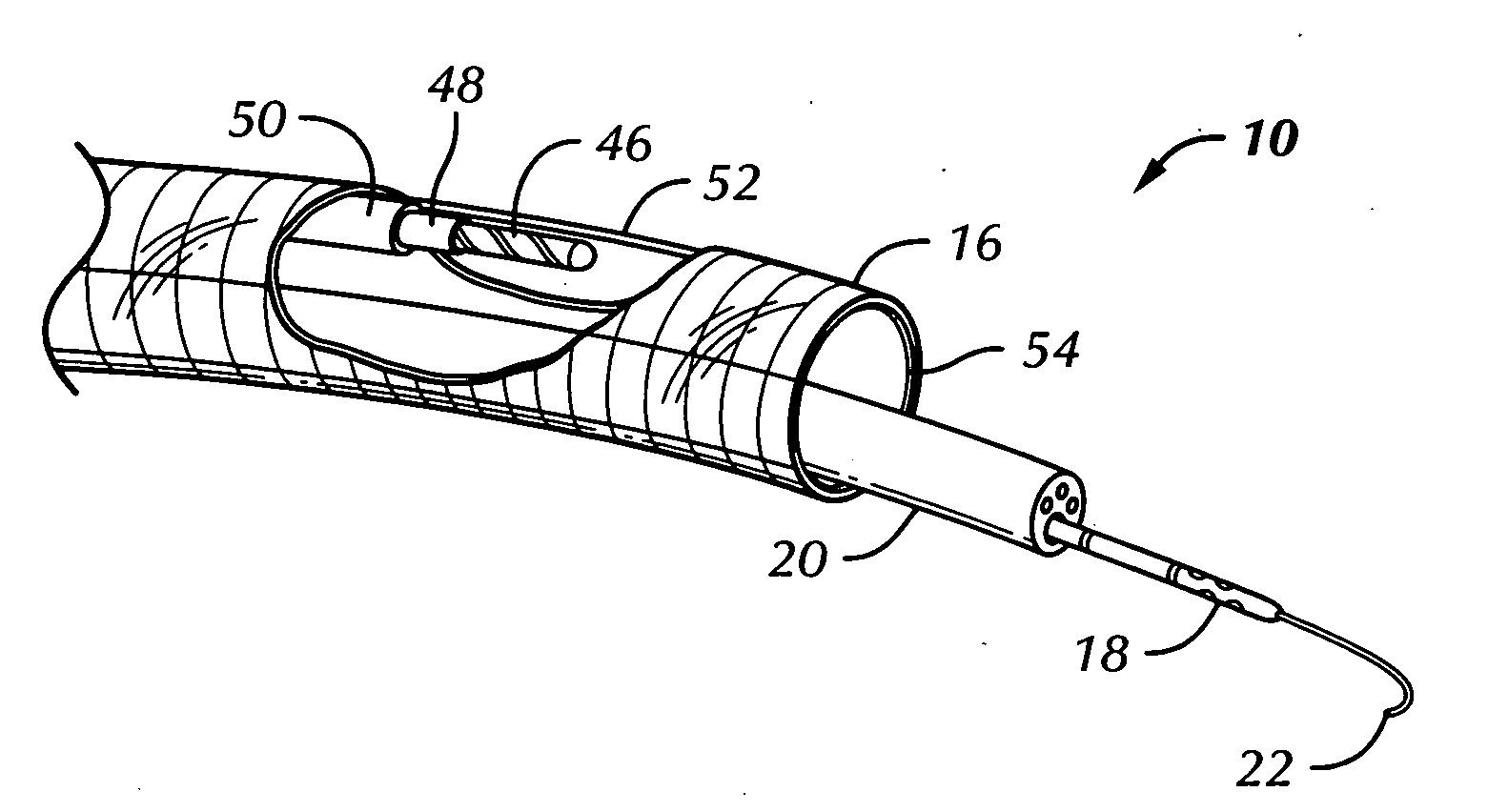Systems and methods for less invasive resolution of maladies of tissue including the appendix, gall bladder, and hemorrhoids
a tissue maladies and less invasive technology, applied in the field of less invasive surgical procedures, can solve the problems of patient discomfort and some degree of risk of incision, and achieve the effects of facilitating tissue gripping, facilitating frictional self-locking, and straightening the tissu
- Summary
- Abstract
- Description
- Claims
- Application Information
AI Technical Summary
Benefits of technology
Problems solved by technology
Method used
Image
Examples
Embodiment Construction
[0049]Referring initially to FIGS. 1 and 2, a catheter assembly is shown, generally designated 10, for manipulating and / or inverting an appendix 12 of a patient into the patient's cecum 14 to perform an appendectomy. It is to be understood that while the appendix is discussed for disclosure purposes, the catheter assembly 10 may also be used to invert the gall bladder for removal and to remove other tissue, e.g., to remove hemorrhoids. In any case, the catheter assembly 10 is advanced into the patient transanally, i.e., through the anus, so that no incision need be made to remove the appendix.
[0050]In the non-limiting implementation shown in FIGS. 1 and 2, the catheter assembly 10 includes a hollow overtube 16 through which an elongated flexible catheter-like manipulator 18 can be advanced. The manipulator 18 can be advanced through a lumen of an endoscope 20, described further below, which itself can be disposed in the overtube 16. In other embodiments no endoscope need be provided...
PUM
 Login to View More
Login to View More Abstract
Description
Claims
Application Information
 Login to View More
Login to View More - R&D
- Intellectual Property
- Life Sciences
- Materials
- Tech Scout
- Unparalleled Data Quality
- Higher Quality Content
- 60% Fewer Hallucinations
Browse by: Latest US Patents, China's latest patents, Technical Efficacy Thesaurus, Application Domain, Technology Topic, Popular Technical Reports.
© 2025 PatSnap. All rights reserved.Legal|Privacy policy|Modern Slavery Act Transparency Statement|Sitemap|About US| Contact US: help@patsnap.com



